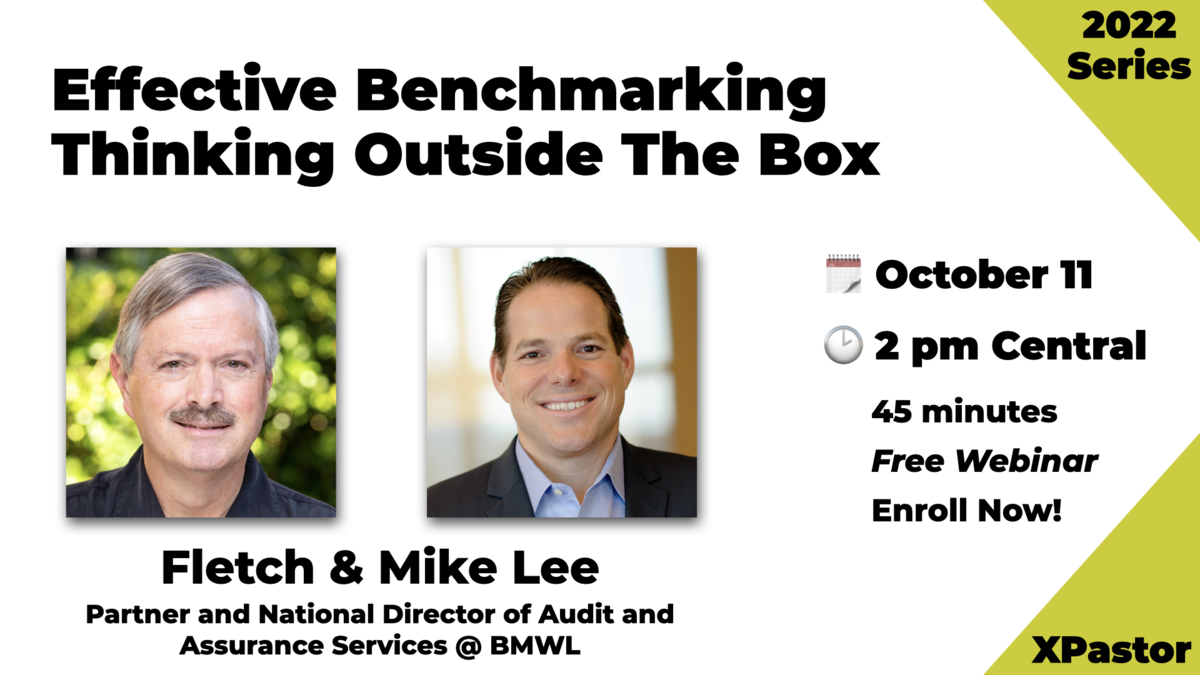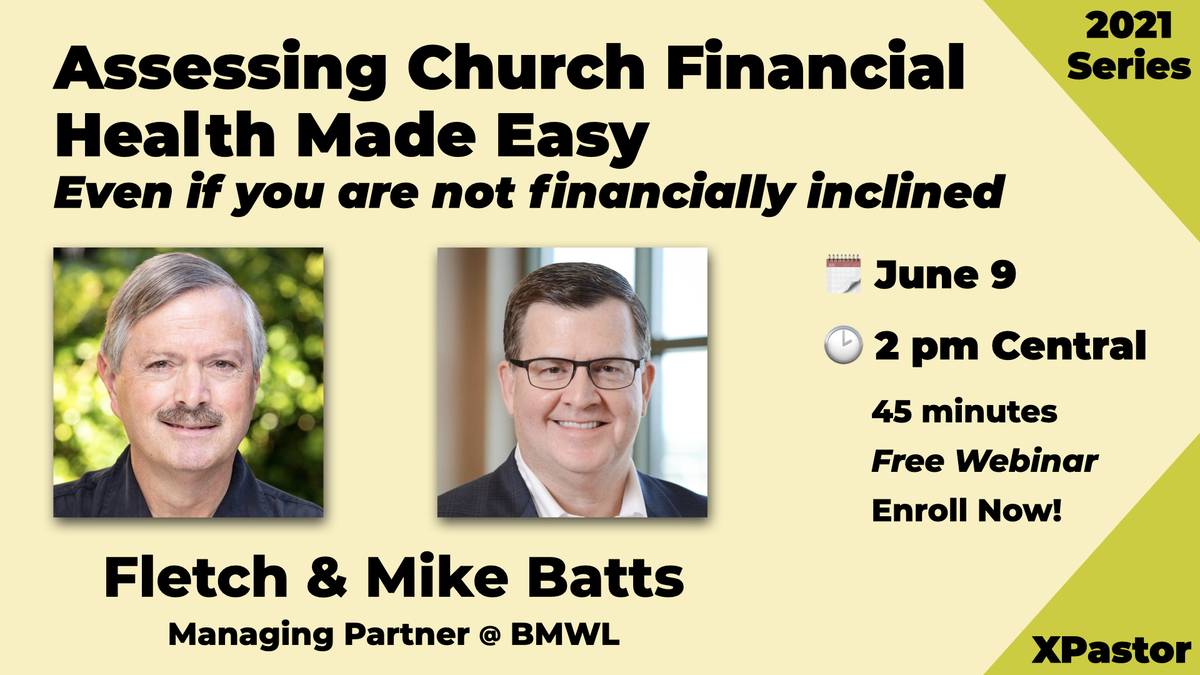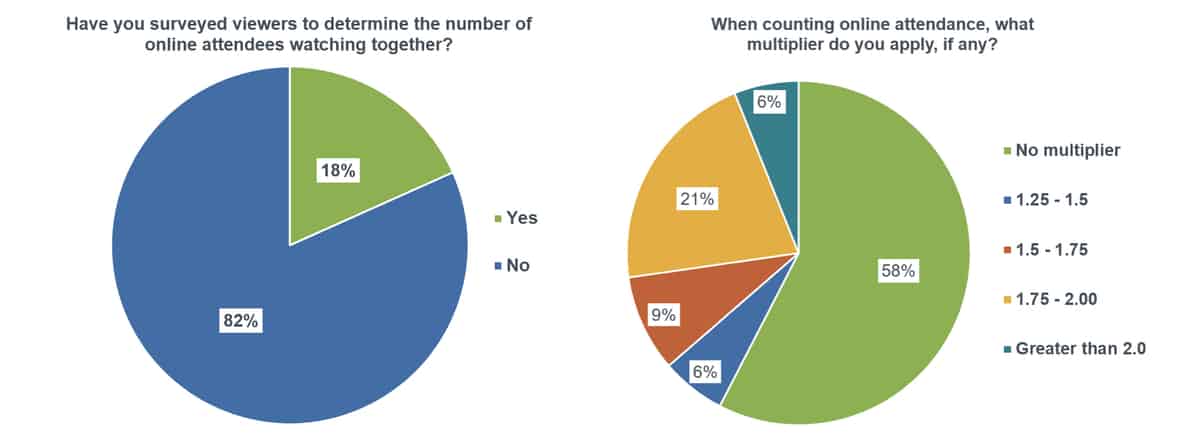Church board members are eager to fulfill their fiduciary responsibility and watch over the long-term economic health of the church. However, most are not used to reading nonprofit financial statements. This can make it challenging for them to successfully achieve that responsibility. Many are used to seeing ratios and peer comparisons (benchmarks) in their professions so they ask for the same information from the church.
In business, there are many ratios that are used to compare and analyze relationships between different metrics. Some are financial, while others use nonfinancial measures (such as number of units sold). Other ratios combine both financial and nonfinancial measures to calculate the end result (such as cost per unit sold). This concept can also be used at churches, except that the nonfinancial measures are typically metrics such as number of attendees, giving units, or full-time equivalent employees.
When prepared correctly, ratios can provide your church with valuable information about your financial health. Below are seven common mistakes well-intentioned churches make while preparing ratios. Watching out for these mistakes will help your church prepare accurate ratios that provide your leadership and board with meaningful financial insight.
1. Not using final adjusted financial statements for the ratio analysis.
We are a society of multi-taskers. But the reality is that you can touch several things lightly or focus your resources on one task at a time and do it really well.
Trying to prepare ratios at the same time you close the books won’t work. Close the books, finalize the numbers, and then use those amounts to generate the ratios. Preliminary numbers generate preliminary ratios, and you don’t want that data ending up in front of people who need it to make important financial decisions.
2. Not spending enough time preparing the data inputs.
Many times people preparing ratios say, “If I had more time, I would have adjusted for this.” Or, “We will make a note of that and get it next year.” Everyone is so busy completing year-end tasks that they run into a last minute time crunch to get it all done.
Plan ahead and don’t save all the ratio prep for the day before—or of—the board meeting. Before the end of the year, identify the data inputs necessary for the ratios and develop a timeline to get this information. For example, is there certain nonfinancial data available immediately after year-end that you can gather before the books are closed? This could include data such as attendees, full-time equivalent employees, and square footage. Don’t save it all until the end.
3. Not reading definitions and understanding the input.
Total salaries seem like a straightforward data input. But who is included in that total? Is it church employees only, or are church school or daycare workers included, too? What about housing allowance? Many churches classify this as a benefit while others view it as salary expense.
The CapinCrouse Church Financial Health IndexTM(Index) specifically defines each data input. If you are completing the Index, it is important to read the definitions (especially for income and expense groupings) and make sure your interpretation of what to include in the category matches the data input definition. The descriptions of data inputs help you gather your data the same way peers do for accurate comparisons and benchmarking. If your church computes its own ratios, make sure you are consistent in the information used in the ratio.
4. Not checking data inputs for reasonableness.
Once the data input template is complete, many participants immediately run the ratios and then look for unexpected results. But error checking the results at a ratio level is a very challenging way to find errors because each ratio may have multiple financial and non-financial data inputs. The preparer has to determine which input is causing the variance. Studying ratios this way is very time consuming and is similar to untying a stubborn knot!
If you run into a question on a ratio result, start by looking at the data inputs instead of the ratios, and review variances in data inputs between years. Did the variance increase or decrease by a significant amount? If it’s an expense grouping, look at the underlying detail to verify that the total doesn’t include something it shouldn’t, and that the total was accumulated the same way each year. It’s important to make sure the correct accounts are accumulated in each data input.
You should also look at the relationships of related data inputs. For example, does benefits as a percent of total salaries make sense, or does it seem unusually high or low? What was it last year? You should also ask questions to understand operational decisions that could be driving significant changes between years. If the insurance expense has changed significantly between years, for instance, did your church change insurance companies or coverage levels?
It’s important to check each data input carefully for reasonableness and recognize the reasons for significant changes between years. Understanding this will not only ensure accurate ratios but make you knowledgeable when explaining changes in the ratio results to your board.
5. Using inexperienced staff to prepare the ratios.
It can be tempting to assign ratio preparation to a less experienced staff member who has the time to work on it. Before you do that, consider the complexity of your financial statements. If they are very complicated, should you make a less experienced person responsible for reading and interpreting them for the ratio analysis? This is not likely to save you time. But it is likely to be frustrating for them and you.
This is a vital analysis for your board. Data inputs are straightforward but the complexity of financial statements varies greatly between churches. More complicated statements may have consolidated multiple entities, a significant one-time event, unusual transactions, or other complicated factors. If this describes your church, you need an experienced person reading the financial statements and pulling out the correct information for the ratio analysis.
6. Not adjusting data inputs for one-time factors or significant subsequent events specific to your church.
Did your church receive a large sum that you normally wouldn’t, such as an unusually large donation, a significant insurance settlement, or proceeds from the sale of an asset? Did you incur one-time expenses such as a loss due to a natural disaster or unexpected event, large non-recurring maintenance expenditures, or costs associated with closing a ministry? These one-time circumstances should be removed from the ratios.
Subsequent events can also affect ratios. Let’s say a church with a December 31 fiscal year-end pays off all its debt during January. Technically, a ratio analysis using the December 31 financial statements would be correct. But the ratios won’t tell the whole story. The church could restatethe cash/debt amounts as if they had been paid off by year-end. This would dramatically change the ratios and give the board a much clearer picture.
In another example, a church merging with another church after year-end could retroactively combine the financial statements of the two entities at year-end to get a clearer picture of the combined results of the new entity. Restating the ratios would give the board a better insight into the financial future of the new entity.
Subsequent or one-time events can dramatically affect your church’s financial picture, so it would be beneficial to either remove or incorporate the new circumstances in the year-end ratios.
7. Overwhelming the board with too much data at once.
There are many ratios but specific ones tell the story of your church. Those ratios can vary significantly between churches. Focus your board on the ones that are key to your church. For example, if you carry a significant amount of debt, the debt and cash flow ratios are key. Or if you notice declining trends in contributions, then those (along with certain expense ratios) become important.
The entire set of ratios and their calculations should be available to board members and management so every decision maker has all the information and is clear on what the ratio is. But first give a focused presentation that uses specific ratios to highlight your church’s strengths and areas for improvement.
Remember, this data is for the governing eyes of your church. It’s important to make sure they not only have the best information available but that it’s presented in the most concise manner. This will allow your board to have a deep understanding of your church’s financial position and provide them with the tools they need to make important strategic decisions for the future of your church.











